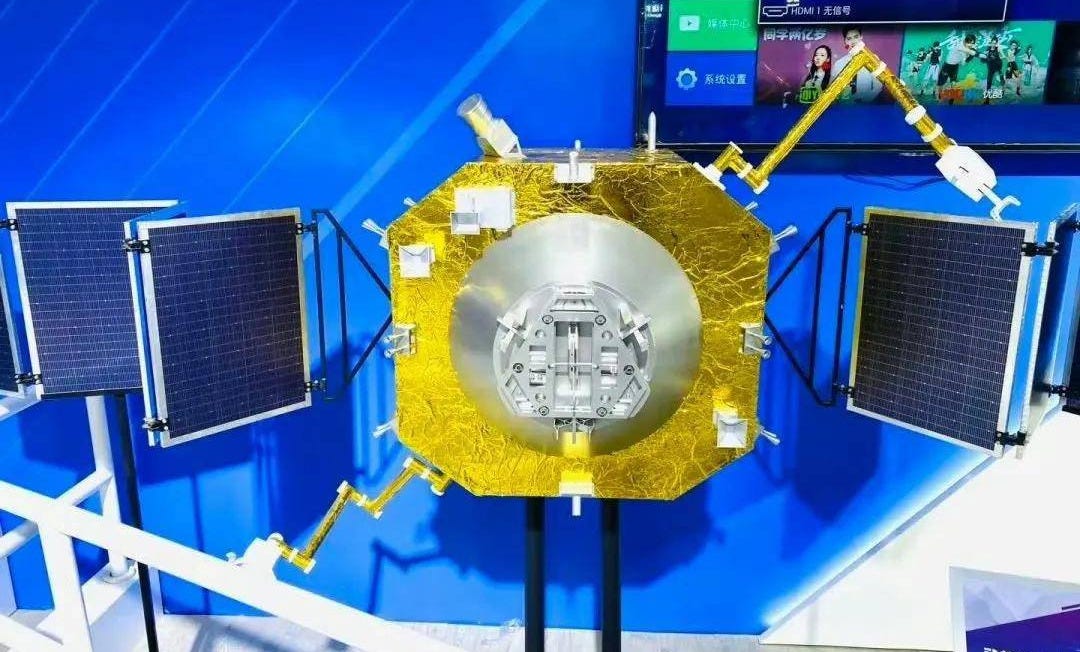Has Shijian-25 Conducted its Refueling Demonstration?
Little has been said about the potentially monumental in-space test.
The Shijian-25 technology demonstration refueling spacecraft, launched in January, has spent the first half of the year closing in on the Shijian-21 space debris mitigation satellite for a spacecraft-to-spacecraft refueling test, out in geostationary orbit over China. Last week, the spacecraft were expected to imminently meet and came within three kilometers of one another.
The previous week has now come and gone with no official news around a test, but observers outside of China were monitoring the positions of the satellites for the test. Via Twitter, COMSPOC, a space situational awareness firm, noted:
“On 11 June Shijian-25 approached Shijian-21, coming within roughly 50 km at approximately 01:21 UTC. Following this initial approach, both satellites executed several smaller maneuvers to closely align their orbital parameters, maintaining a mean longitude slot at ~128 degrees.
Further analysis indicates that Shijian-21 and Shijian-25 reached their closest proximity on 13 June between approximately 11:30 UTC and 13:00 UTC, after which they separated again. As of 16 June, the inter-satellite distance had increased significantly and is now greater than 100 km.
Given the relatively short duration (~1.5 hours) of this close encounter, we have identified three potential scenarios:
Shijian-21 and Shijian-25 successfully docked during that time period;
Shijian-21 and Shijian-25 conducted a deliberate rehearsal maneuver but did not attempt docking;
Shijian-21 and Shijian-25 initiated a docking attempt but aborted during final approach.
If an actual docking did not occur, we expect another close-approach event to take place soon. At present, it remains uncertain whether an actual docking event took place; additional observations will be required to confirm their operational activities and intentions.”
Throughout the possible test, two U.S. military spacecraft, USA-270 and USA-271, remained nearby, likely for observations of the refueling test, but have now departed. USA-271 notably buzzed TJSW-15 and TJSW-16 back in April.
If the test did occur and was successful, China now significantly leads in in-space refueling technologies, out ahead of American efforts. The United States currently has three companies pursuing the technology, namely SpaceX, Blue Origin, and Northrop Grumman, all of which are largely privately funded and developing it independently after a NASA-backed mission was dropped.
Details on Shijian-25 and Shijian-21 are scarce, however at the 2021 Zhuhai Airshow plans for a similar spacecraft boasted approximately 1,300 kilograms of propellant available for refueling services. Docking operations for the spacecraft described at the airshow say:
"When it arrives within about 2 meters of the satellite, with the cooperation of the robotic arm, it will achieve a close connection with the satellite refueling port and deliver fuel to the satellite.”
In the meantime, we will have to wait for official word from one of China's space agencies and enterprises, which may announce the success of the test anywhere from a few days to several weeks from now.
A few months ago, Universe Today jumped the gun on the test, claiming the BeiDou-3 G7 satellite was the target and received 142 kilograms of propellant. This was then reprinted the day after on other outlets, despite BeiDou-3 G7 being a considerable distance away at a 110.5 degree longitude.



